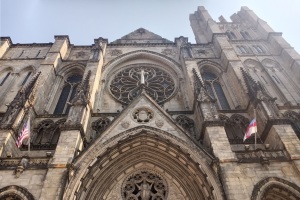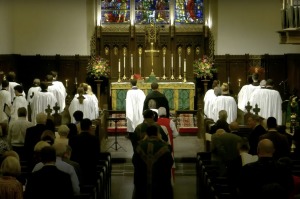London Grenfell Tower Fire: What Caused Fire and What Made it Worse?
While local authorities are yet to conduct a thorough investigation on the devastating London fire this week, some reports have suggested that the Grenfell Tower's design might be one of the causes why it went ablaze very quickly.
The Grenfell Tower, which is located in Kensington, West London, went afire just after midnight on Tuesday. First emergency calls about the incident were recorded at around 12:54 a.m. London time. The residential building is 24 storeys high and houses 120 units.
At the time of writing, authorities have already confirmed at least 12 casualties. Meanwhile, the latest update from the London Ambulance Service says they have taken in and treated at least 68 injured patients from the fire who were brought to six nearby hospitals. Unfortunately, more Grenfell Tower residents are still reported missing.
What Caused the Fire?
As mentioned, the local fire brigade and police are yet to carry out a full investigation on the massive fire. However, there are speculations that some of the possible causes of the fire could be the building's cladding which was added following regeneration plans of the tower.
The Telegraph listed possible causes such as a gas explosion, faulty electric wiring and a faulty fridge, as one resident of the tower was reportedly heard telling people his/her malfunctioning appliance started the fire. However, nothing has been confirmed yet.
Apart from learning what caused the fire, another pressing matter is what helped it spread so quickly that it became impossible for many of its residents to make it out alive or unharmed.
What Helped the Fire Spread Fast?
The 24-storey residential tower has been up since 1974 so it underwent refurbishment to update its architecture — a project that was approved in 2014.
The main feature of the building refurbishment included the addition of outskirts cladding and glazed curtain walling — believed to be made of non-fireproof materials — which many experts believe may have caused the fire to spread immensely fast.
Architect and fire expert Sam Webb told The Guardian, "We are still wrapping postwar high-rise buildings in highly flammable materials and leaving them without sprinkler systems installed, then being surprised when they burn down."
Webb also said these were "a disaster waiting to happen." Now that these possibilities are being presented, public officials are calling for the review of the building's repair plans.
According to The Independent, Kensington Councillor Judith Blakeman said, "If the cladding was partly responsible for the fire we need to know what the specification for the cladding was and why it suddenly just went up (in flames) in about five minutes, because it should have been fire resistant, surely."
Residents Saw it Coming
Residents of the Grenfell Tower actually started an action group a couple of years ago following what they deemed was an unsafe living condition due to the construction plans applied on the building.
Previous reports and blog posts show that the Grenfell Action Group had been calling out the Kensington and Chelsea Tenant Management Organisation for the alleged inaction over the residents' concern on the building's safety.
In November 2016, the group posted a blog titled "Playing with Fire" where they prophetically expressed: "Only a catastrophic event will expose the ineptitude and incompetence of our landlord, the KCTMO, and bring an end to the dangerous living conditions and neglect of health and safety legislation that they inflict upon their tenants and leaseholders."
After several tries of bringing the issue to concerned officials and institutions, it sounded like they did not see a valuable response from the other side of the table.
At some part of the same November 2016 blog post, the Grenfell Action Group also said: "Unfortunately, the Grenfell Action Group have reached the conclusion that only an incident that results in serious loss of life of KCTMO residents will allow the external scrutiny to occur that will shine a light on the practices that characterise the malign governance of this non-functioning organisation."
Recently, Blakeman also told The Guardian on another report that she tried raising at least 19 individual residents' complaints in March. The issues include Grenfell Tower's safety risks such as the placement of gas pipes in the main stairwells. However the local public official claimed she was treated "like a nuisance." Blakeman added she demanded an "independent safety adjudication" on Grenfell Tower but was turned down by other public officials.
Meanwhile, people have also started to point out that public papers show the Grenfell Tower only had a single set of stairs as its evacuation route considering that it was 24 storeys tall and had 120 residential units.




























